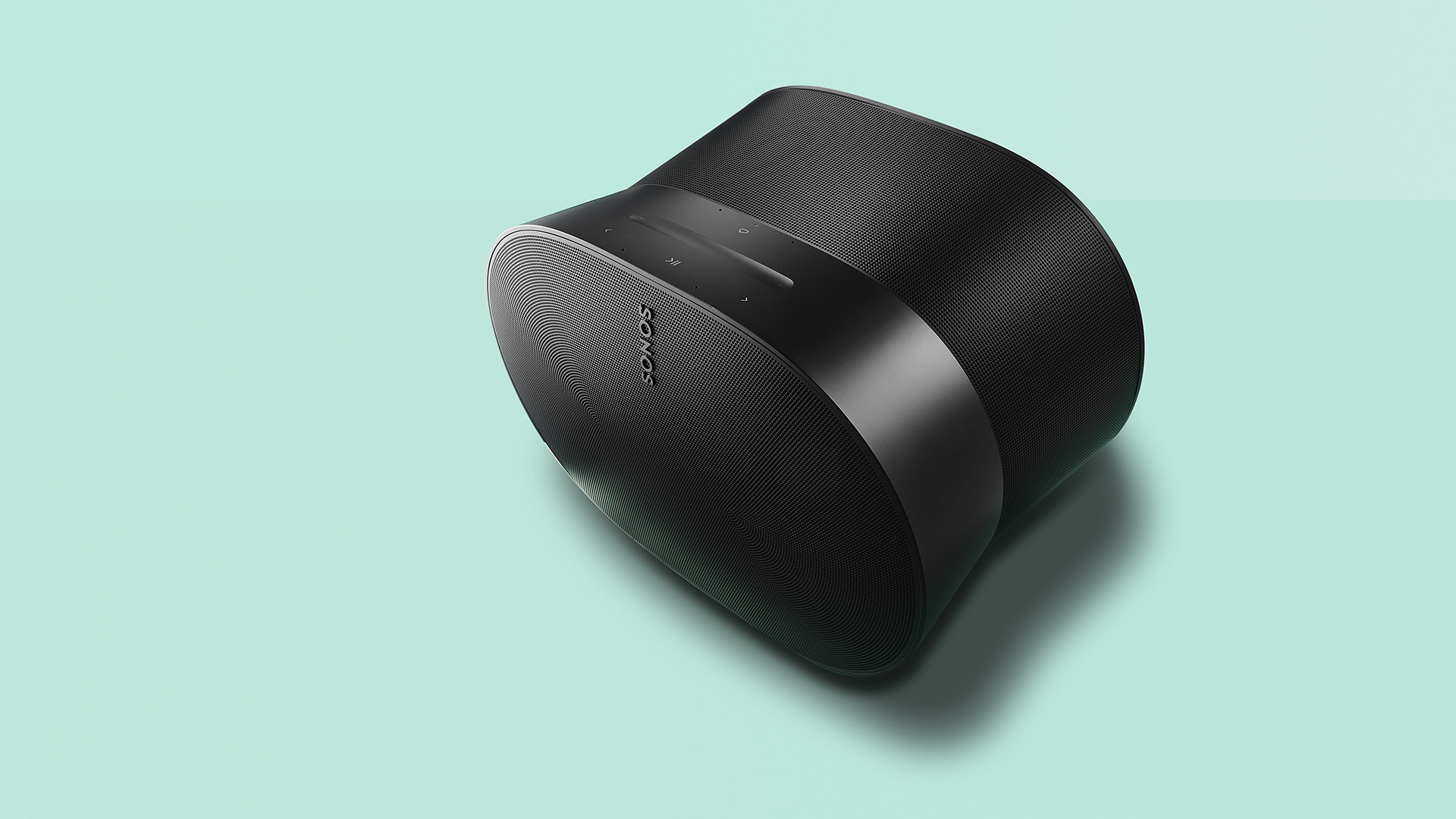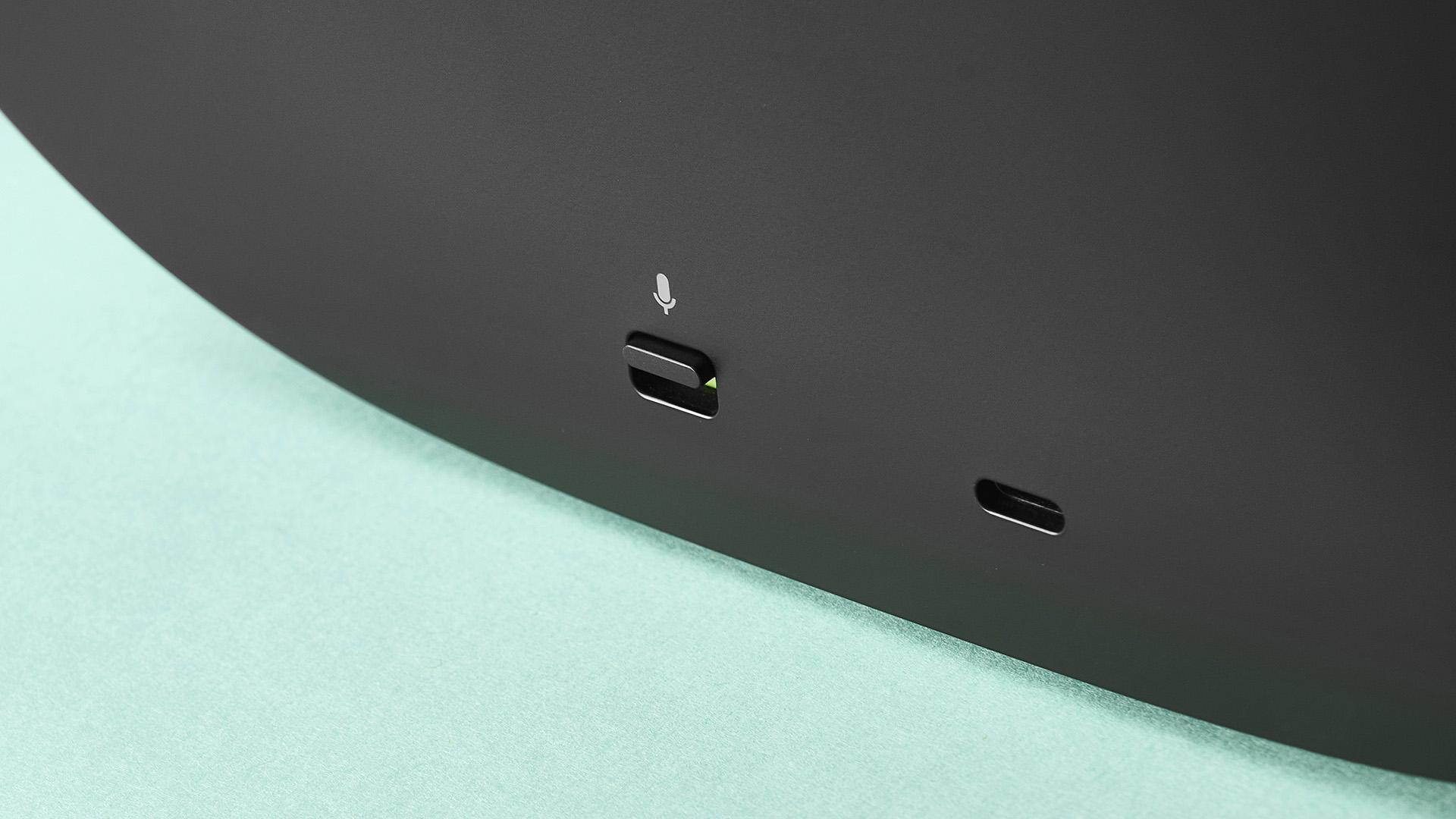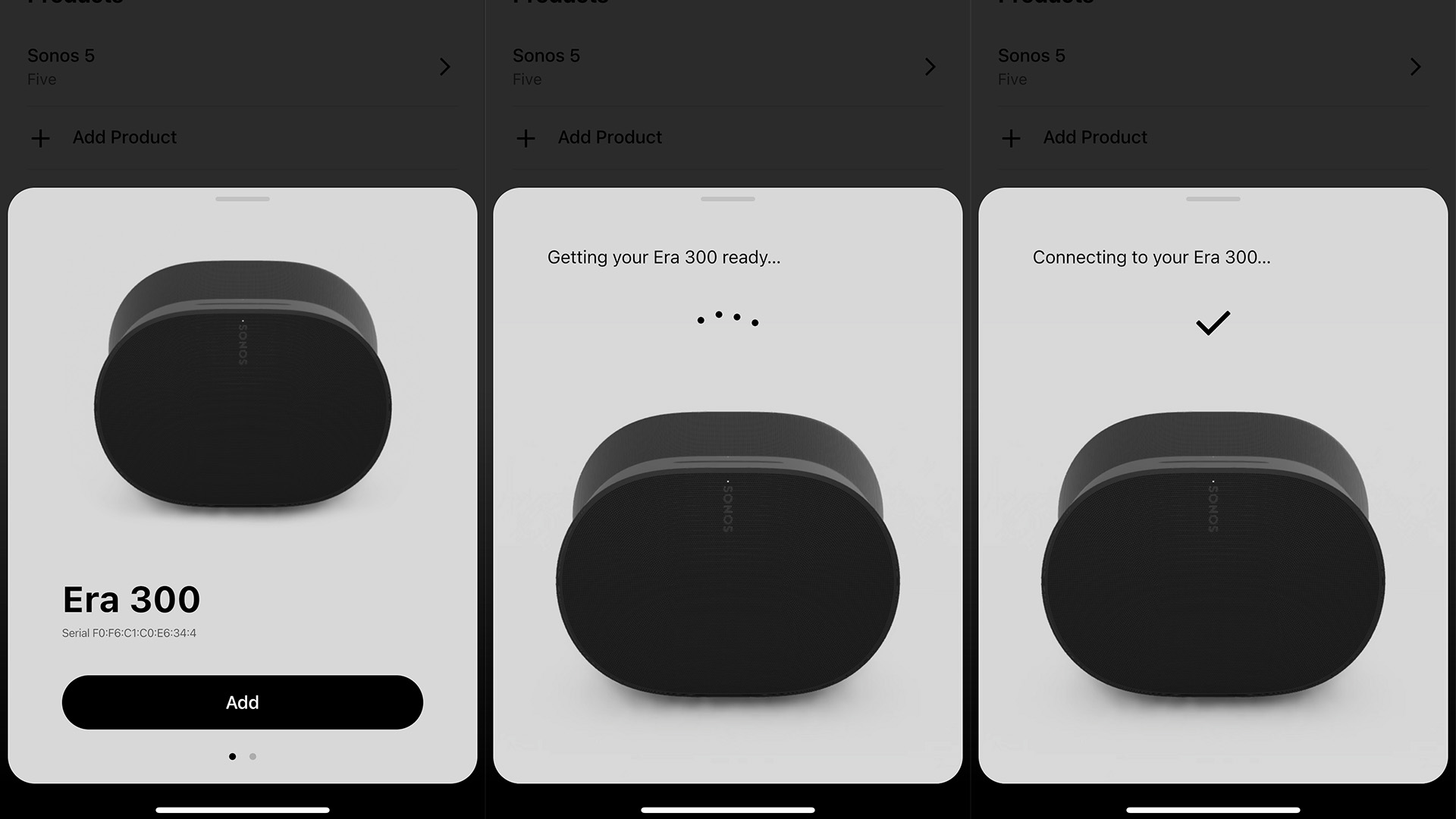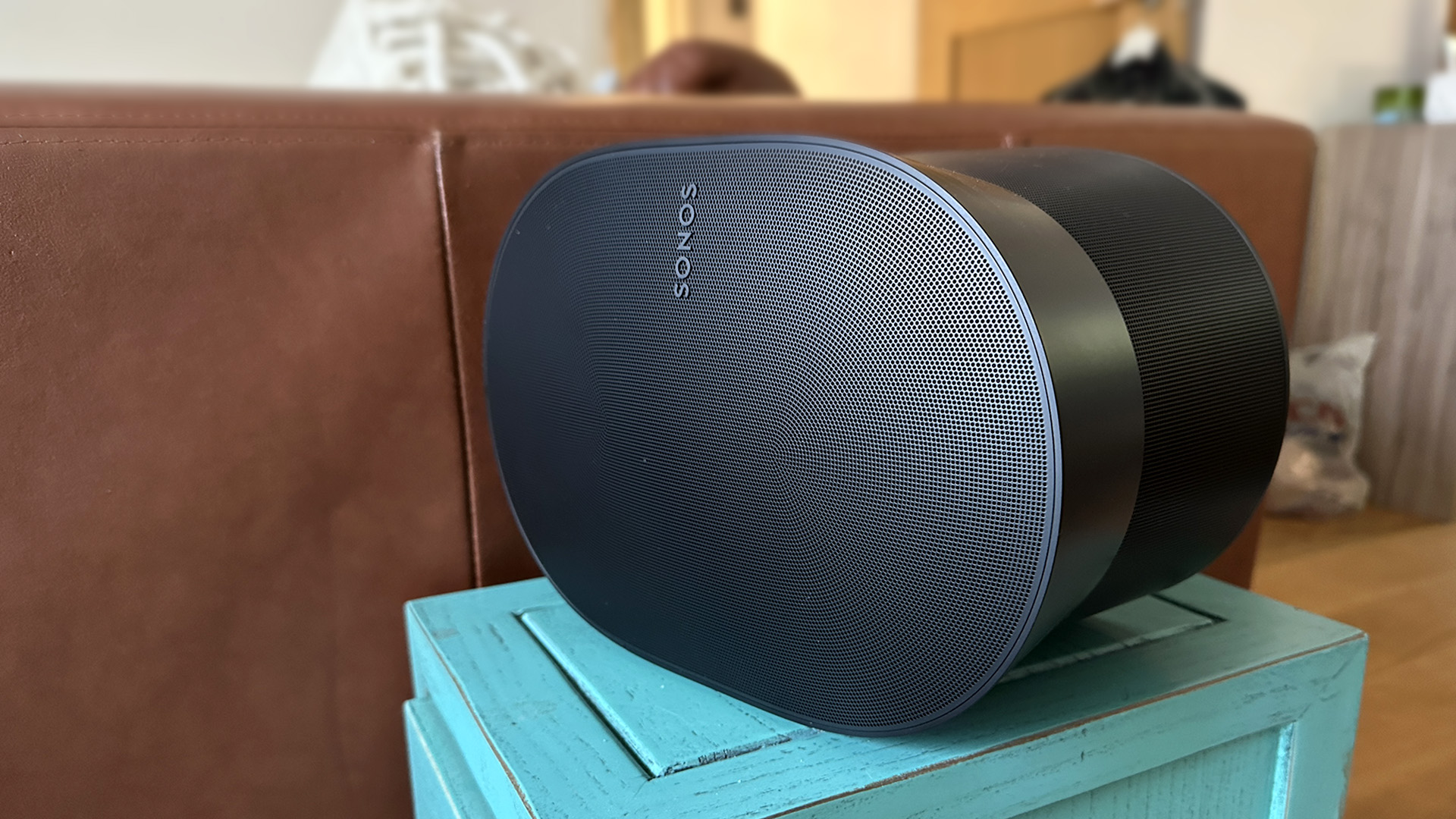Sonos Era 300 review: a premium smart speaker you have to hear to believe
The Era 300 may not be the flagship of the range, but this is the best-sounding Sonos speaker to date



The unusually shaped Sonos Era 300 delivers where it counts, offering seriously impressive immersive sound that’s way beyond even the flagship Sonos Five. The addition of the voice assistant – and the ability to turn it off – is a plus, as is the Bluetooth connection. However, those looking to hardwire it may find the USB-C port a little annoying. Without doubt though, this is the best speaker for the money right now.
-
+
Incredible sound
-
+
Dolby Atmos support is next level
-
+
More compact than the Sonos Five
-
-
That shape isn’t for everyone
-
-
Advanced tuning is sensitive
-
-
Adapter needed for input port
Why you can trust T3

The Sonos Era 300 and Era 100 are the first brand-new smart speakers from the company since 2017. While the smaller Era 100 is set to replace the existing Sonos One speaker, the Era 300 sits just below the flagship Sonos 5 model. That could suggest that an Era 500 speaker could follow, giving users a choice of three models, rather than the former two.
Having previously used (and owned) the Sonos 5, I was keen to see how the Era 300 compared, as well as how both models stood against the considerably cheaper Apple HomePod second generation. While the Era 300 costs £100 less than the Sonos 5, it is in many ways, this is a better speaker.
While the built-in voice assistant options on the Era 300 make it a contender for the best smart speaker, it is the premium best wireless speaker category where it faces the most competition. Here it competes against some epic models like the Bowers and Wilkins Zeppelin and the Naim Mu-so 2. I spent some serious listening time with the Sonos to find out just how it performs.

The touch buttons on the top of the Sonos Era 300
Design and features of the Sonos Era 300
There’s one thing to get out of the way with the Era 300, and that’s the shape. Unlike most speakers, it’s not cylindrical – instead, it’s hourglassed, as if someone tied a belt around its middle – thinner in the middle than on either end. It certianly makes it stand out and easily recognisable, which is a plus, but it won’t be to everyone’s taste.
I actually like the look of it, and the fact that it’s considerably smaller than the Sonos Five. Unlike the Sonos Five though, you can’t sit the Era 300 on its side – it only sits with the oblong front with its longest side to the surface. I would have liked the option to sit it upright, especially if you choose to create a stereo pair.
Of course, that strange shape, and the positioning are all down to the audio design of the speaker and allow it to create an immersive sound from a relatively small, if heavy, speaker. Despite measuring 160x260x185mm (6.3x10.24x7.28in) the Era 300 weighs a whopping 4.47kg (9.85lbs). That makes it awkward to move around but these speakers are designed to stay in one place once positioned, so it’s not really an issue.
The speaker is designed to be operated remotely, either using the Sonos app, or via one of the voice assistants. However, as with other Sonos models, there are some touch-sensitive controls on the top of the device. There’s a play/pause button, forward and back buttons and a grooved area design to allow you to slide your finger along it to change the volume. There’s also a button to turn the voice assistant on and off.
Get all the latest news, reviews, deals and buying guides on gorgeous tech, home and active products from the T3 experts

On the rear of the Sonos Era 300 there's a switch to disable the microphone, a Bluetooth button and a USB-C port for input
You can use Amazon Alexa or Sonos’ own voice assistant with the Era 300, and these are set up using the app. There’s no Google assistant here. You can also use Apple’s Siri if the device is connected to your Apple Home app – though this uses the microphone on your Apple devices to control rather than the ones on the Sonos. If you’re worried about being overheard, or would just rather not use the microphone, there’s a switch on the back of the device to fully disconnect the microphone.
Also on the back, you’ll find a USB-C input, which is a change from the 3.5mm port on other models. It means that you’ll need to get a special Sonos Line-In adapter if you want to connect your turntable or another device directly. This port does allow you to connect the speaker to an ethernet port, for wired internet if needed – again, using a special Sonos Combo adapter cable that is sold separately.
The big addition here though is the Bluetooth button. The Era allows you to connect devices directly via Bluetooth rather than just AirPlay or the app, which has been the case with previous speakers. This is handy if you want to connect to your speaker without using your WiFi, but in most cases with a stationary speaker such as this, WiFi is all you need, and Apple users are already well-catered for with AirPlay 2.

Setting up the Sonos Era 300
Setting up the Sonos Era 300 is extremely easy, especially if you already have Sonos devices in your home. All the set-up is performed through the Sonos app, which is available for both iOS and Android. Once the app is downloaded, and you’ve signed up for an account, you can simply click the add device button.
I found that the app detected the Era 300 straight away and then proceeded to link it to my Sonos app in less than a minute. Once the device is connected you can fine-tune the sound of your system using what Sonos calls Trueplay.
On previous models (like the Sonos Five) this required an iOS device to work as a microphone, having you walk around the room waving your phone around to pick up the Science-fiction-styled whooping noises coming from the speaker. This setting on the Era 300 is labelled as Advanced Tuning (and is now also available on Android), while a Quick Tuning option uses the Era’s own microphone to listen as the noises bound off your walls.
I found the advanced tuning on the Era 300 to be far more sensitive to external noises than on the Sonos Five. A few times during the process it asked me to retry as there was too much background noise, despite the room being reasonably quiet.
The only thing left to do is to link your music streaming services to the Sonos app, though if you are using an Apple device you can play straight from Apple Music. You simply pick the Era 300 from the list of available speakers that appear in the app. Sonos also has its own streaming service, called Sonos Radio, which includes a range of radio shows, new music and instrumental tracks. You won’t find individual albums and tracks available in the way you can with services like Apple Music and Spotify. The service is free though, only costing if you opt for the HD version, which is free for a month and then £9.99 a month.

Sonos Era 300 sound quality
I tested the Sonos Era 300 with a range of tracks both through the Sonos app and directly from Apple Music over Airplay 2. I tried songs that were both lossless and in Dolby Atmos, ranging from dance tracks to rock and a little Taylor Swift for good measure.
The Sonos app allows you to turn the Dolby Atmos mode on and off for the device, so I was able to hear the difference this made to tracks that had it too. I also compared the same tracks played on the Sonos Five and Apple’s HomePod second generation.
The beauty of AirPlay is that it allows you to switch quickly between speakers and mix the sound between any AirPlay devices, so you can in fact have both HomePod and Sonos speakers play the same music in different rooms – or in the same room, though not as a stereo pair. You would need two of the same Sonos speakers to create a proper stereo pair.
The biggest advantage the Sonos Era had over the HomePod was volume, so compare I had to set the volume of the Era lower. Considering the HomePod is £150 cheaper, it’s no surprise that the Era had the better sound. The surprise was that the Era 300 sounded better than the more expensive Sonos Five.
While the difference was at times very subtle, the sound from the Era 300 was bigger and more immersive (to use the company’s own term) than the Sonos Five. For such a relatively small speaker, the Era 300 really does fill the room. The bass is deep and solid without a hint of distortion, while the Dolby Atmos does an incredible job of separating the instruments to make each part clear. It’s something that some purists don’t like about Dolby Atmos mixes, but I feel in most tracks it works well.
As a single speaker, the Sonos Era 300 is not going to compare to a high-end pair of speakers but it is an impressive unit at this price. I’d love to pair two of these together, for a full set-up, as I believe it could actually be a relatively affordable way to get truly great sound for your music.

Should I buy the Sonos Era 300?
The Sonos Era 300 may look a little strange, and won’t sit on its side but there’s no doubt that it delivers on audio performance. If you love your Dolby Atmos sound, then this is the speaker for you. It gives huge volume while maintaining crisp detail and whacking amounts of bass. If you’re already a fan of the Sonos sound, this speaker is a natural upgrade, and you will not be disappointed.
It is a slight shame that you now need to buy a special adapter to use the input option though. It surely wouldn’t have been hard to keep a 3.5mm input in the back, though perhaps not as aesthetically pleasing.
Having heard this speaker I’m not sure that Sonos will be rushing to put out an Era 500. Mainly as I’m not sure how much more it could deliver without massively increasing the size of the unit. So, if you want the best possible Sonos sound right now, grab yourself a pair of Era 300 speakers. If you have a Sonos soundbar, like the Sonos Arc or Beam, you can pair it with these and create an incredible cinema sound system too.

Also consider
Though smaller than the Sonos Five, the Era 300 is still a big speaker. So, unless you really need it to fill a big space, you will probably find the smaller Era 100 will do the trick. Especially if you pair it with a second unit – and you can get two Sonos Era 100 devices for only a few quid more than the Era 300.
If you want the Dolby Atmos sound, I would also consider buying a pair of Apple HomePod Second Generation speakers. Placed in a stereo pair these will match the volume of the Sonos Era though they don’t have quite the same level of immersion, and will cost you £150 more.
If you really want to step up from the Sonos Era 300, consider the Naim Mu-so 2. This costs nearly three times as much as the Sonos Era 300, but it will deliver seriously impressive sound. Yes, it’s a big jump, but this is audiophile territory and by those standards, it’s still pretty cheap.

As T3's Editor-in-Chief, Mat Gallagher has his finger on the pulse for the latest advances in technology. He has written about technology since 2003 and after stints in Beijing, Hong Kong and Chicago is now based in the UK. He’s a true lover of gadgets, but especially anything that involves cameras, Apple, electric cars, musical instruments or travel.